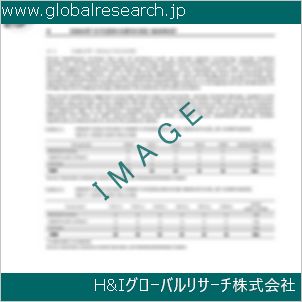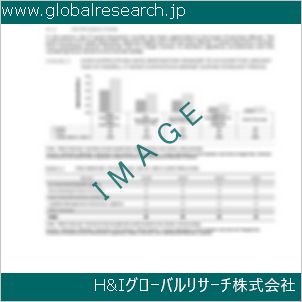Table of Contents
1 Industry Overview of Niobium
1.1 Definition and Specifications of Niobium
1.1.1 Definition of Niobium
1.1.2 Specifications of Niobium
1.2 Classification of Niobium
1.3 Applications of Niobium
1.3.1 Nuclear Application
1.3.2 Non-Nuclear Application
1.4 Industry Chain Structure of Niobium
1.5 Industry Overview and Major Regions Status of Niobium
1.5.1 Industry Overview of Niobium
1.5.2 Global Major Regions Status of Niobium
1.6 Industry Policy Analysis of Niobium
1.7 Industry News Analysis of Niobium
2 Manufacturing Cost Structure Analysis of Niobium
2.1 Raw Material Suppliers and Price Analysis of Niobium
2.2 Equipment Suppliers and Price Analysis of Niobium
2.3 Labor Cost Analysis of Niobium
2.4 Other Costs Analysis of Niobium
2.5 Manufacturing Cost Structure Analysis of Niobium
2.6 Manufacturing Process Analysis of Niobium
3 Technical Data and Manufacturing Plants Analysis of Niobium
3.1 Capacity and Commercial Production Date of Global Niobium Major Manufacturers in 2023
3.2 Manufacturing Plants Distribution of Global Niobium Major Manufacturers in 2023
3.3 R&D Status and Technology Source of Global Niobium Major Manufacturers in 2023
3.4 Raw Materials Sources Analysis of Global Niobium Major Manufacturers in 2023
4 Capacity, Production and Revenue Analysis of Niobium by Regions, Types and Manufacturers
4.1 Global Capacity, Production and Revenue of Niobium by Regions 2019-2024
4.2 Global and Major Regions Capacity, Production, Revenue and Growth Rate of Niobium 2019-2024
4.3 Global Capacity, Production and Revenue of Niobium by Types 2019-2024
4.4 Global Capacity, Production and Revenue of Niobium by Manufacturers 2019-2024
5 Price, Cost, Gross and Gross Margin Analysis of Niobium by Regions, Types and Manufacturers
5.1 Price, Cost, Gross and Gross Margin Analysis of Niobium by Regions 2019-2024
5.2 Price, Cost, Gross and Gross Margin Analysis of Niobium by Types 2019-2024
5.3 Price, Cost, Gross and Gross Margin Analysis of Niobium by Manufacturers 2019-2024
6 Consumption Volume, Consumption Value and Sale Price Analysis of Niobium by Regions, Types and Applications
6.1 Global Consumption Volume and Consumption Value of Niobium by Regions 2019-2024
6.2 Global and Major Regions Consumption Volume, Consumption Value and Growth Rate of Niobium 2019-2024
6.3 Global Consumption Volume and Consumption Value of Niobium by Types 2019-2024
6.4 Global Consumption Volume and Consumption Value of Niobium by Applications 2019-2024
6.5 Sale Price of Niobium by Regions 2019-2024
6.6 Sale Price of Niobium by Types 2019-2024
6.7 Sale Price of Niobium by Applications 2019-2024
6.8 Market Share Analysis of Niobium by Different Sale Price Levels
7 Supply, Import, Export and Consumption Analysis of Niobium
7.1 Supply, Consumption and Gap of Niobium 2019-2024
7.2 Global Capacity, Production, Price, Cost, Revenue, Supply, Import, Export and Consumption of Niobium 2019-2024
7.3 USA Capacity, Production, Price, Cost, Revenue, Supply, Import, Export and Consumption of Niobium 2019-2024
7.4 EU Capacity, Production, Price, Cost, Revenue, Supply, Import, Export and Consumption of Niobium 2019-2024
7.5 China Capacity, Production, Price, Cost, Revenue, Supply, Import, Export and Consumption of Niobium 2019-2024
7.6 Japan Capacity, Production, Price, Cost, Revenue, Supply, Import, Export and Consumption of Niobium 2019-2024
8 Major Manufacturers Analysis of Niobium
8.1 Manufacturer One
8.1.1 Company Profile
8.1.2 Product Picture and Specifications
8.1.2.1 Type I
8.1.2.2 Type II
8.1.2.3 Type III
8.1.3 Capacity, Production, Price, Cost, Gross and Revenue
8.1.4 Contact Information
8.2 Manufacturer Two
8.2.1 Company Profile
8.2.2 Product Picture and Specifications
8.2.2.1 Type I
8.2.2.2 Type II
8.2.2.3 Type III
8.2.3 Capacity, Production, Price, Cost, Gross and Revenue
8.2.4 Contact Information
8.3 Manufacturer Three
8.3.1 Company Profile
8.3.2 Product Picture and Specifications
8.3.2.1 Type I
8.3.2.2 Type II
8.3.2.3 Type III
8.3.3 Capacity, Production, Price, Cost, Gross and Revenue
8.3.4 Contact Information
8.4 Manufacturer Four
8.4.1 Company Profile
8.4.2 Product Picture and Specifications
8.4.2.1 Type I
8.4.2.2 Type II
8.4.2.3 Type III
8.4.3 Capacity, Production, Price, Cost, Gross and Revenue
8.4.4 Contact Information
8.5 Manufacturer Five
8.5.1 Company Profile
8.5.2 Product Picture and Specifications
8.5.2.1 Type I
8.5.2.2 Type II
8.5.2.3 Type III
8.5.3 Capacity, Production, Price, Cost, Gross and Revenue
8.5.4 Contact Information
…
9 Marketing Trader or Distributor Analysis of Niobium
9.1 Marketing Channels Status of Niobium
9.2 Traders or Distributors with Contact Information of Niobium by Regions
9.3 Ex-work Price, Channel Price and End Buyer Price Analysis of Niobium
9.4 Regional Import, Export and Trade Analysis of Niobium
10 Industry Chain Analysis of Niobium
10.1 Upstream Major Raw Materials Suppliers Analysis of Niobium
10.1.1 Major Raw Materials Suppliers with Contact Information Analysis of Niobium
10.1.2 Major Raw Materials Suppliers with Supply Volume Analysis of Niobium by Regions
10.2 Upstream Major Equipment Suppliers Analysis of Niobium
10.2.1 Major Equipment Suppliers with Contact Information Analysis of Niobium
10.2.2 Major Equipment Suppliers with Product Pictures Analysis of Niobium by Regions
10.3 Downstream Major Consumers Analysis of Niobium
10.3.1 Major Consumers with Contact Information Analysis of Niobium
10.3.2 Major Consumers with Consumption Volume Analysis of Niobium by Regions
10.4 Supply Chain Relationship Analysis of Niobium
11 Development Trend of Analysis of Niobium
11.1 Capacity, Production and Revenue Forecast of Niobium by Regions and Types
11.1.1 Global Capacity, Production and Revenue of Niobium by Regions 2024-2029
11.1.2 Global and Major Regions Capacity, Production, Revenue and Growth Rate of Niobium 2024-2029
11.1.3 Global Capacity, Production and Revenue of Niobium by Types 2024-2029
11.2 Consumption Volume and Consumption Value Forecast of Niobium by Regions, Types and Applications
11.2.1 Global Consumption Volume and Consumption Value of Niobium by Regions 2024-2029
11.2.2 Global and Major Regions Consumption Volume, Consumption Value and Growth Rate of Niobium 2024-2029
11.2.3 Global Consumption Volume and Consumption Value of Niobium by Types 2024-2029
11.2.4 Global Consumption Volume and Consumption Value of Niobium by Applications 2024-2029
11.3 Supply, Import, Export and Consumption Forecast of Niobium
11.3.1 Supply, Consumption and Gap of Niobium 2024-2029
11.3.2 Global Capacity, Production, Price, Cost, Revenue, Supply, Import, Export and Consumption of Niobium 2024-2029
11.3.3 USA Capacity, Production, Price, Cost, Revenue, Supply, Import, Export and Consumption of Niobium 2024-2029
11.3.4 EU Capacity, Production, Price, Cost, Revenue, Supply, Import, Export and Consumption of Niobium 2024-2029
11.3.5 China Capacity, Production, Price, Cost, Revenue, Supply, Import, Export and Consumption of Niobium 2024-2029
11.3.6 Japan Capacity, Production, Price, Cost, Revenue, Supply, Import, Export and Consumption of Niobium 2024-2029
12 New Project Investment Feasibility Analysis of Niobium
12.1 New Project SWOT Analysis of Niobium
12.2 New Project Investment Feasibility Analysis of Niobium
13 Conclusion of the Global Niobium (CAS 7440-03-1) Industry 2024 Market Research Report
| ※参考情報 ニオブ(Nb)は、原子番号41の金属であり、化学式は7440-03-1で示される元素です。周期表では、バナジウムと同じ第5周期に位置する遷移金属であり、一般に銀白色の光沢を持つ金属として知られています。ニオブは、地球の crust に存在する元素の一つであり、主に鉱石として用いられます。ニオブを含む鉱石は、主にコルンバイトと呼ばれる鉱物であり、商業的にはニオブはこの鉱石から独立して抽出されます。 ニオブの特徴としては、まずその優れた耐食性が挙げられます。これは、ニオブが空気中の酸素と反応して酸化ニオブの薄い酸化膜を形成し、さらなる酸化や腐食を防ぐ特性を持っているためです。また、ニオブは高い融点(約2468°C)と良好な熱伝導性を有しており、これにより高温環境において安定して使用することができます。さらに、ニオブは強い超伝導特性を示すことでも知られており、特に低温超伝導体としての応用が多岐に渡ります。 ニオブの種類については、主に結晶構造によって分類されます。元素ニオブは体心立方(BCC)構造を持ち、この性質から様々な合金と容易に合成されます。ニオブはその物理的・化学的特性から他の金属(例えばチタン、鋼、鋼鉄)と合金を成すことで、新たな材料特性を得ることができます。また、ニオブの同位体には、Nb-93とNb-91などが存在しますが、商業的に重要なのはNb-93です。これは、放射線治療や放射性トレーサーとしての応用があります。 ニオブの用途は非常に広範囲にわたります。産業用途としては、航空宇宙分野や自動車産業における高強度構造材、エネルギー分野における超伝導体などが挙げられます。航空機や宇宙船の部品、特に耐熱性や強度が重要な部位に用いられることが多いです。また、ニオブは高温超伝導体の製造に重要な役割を果たしており、これにより電力供給システムや交通システムの効率化が期待されています。 さらに、ニオブは化学産業にも広く使用されており、酸化物やニオブ合金を用いた触媒としての利用が進められています。特に石油化学の分野では、ニオブを含む触媒が重質油の改質などに効果を発揮します。また、ニオブは強化プラスチックやセラミックスの製造にも用いられることがあります。これにより、材料の機械的特性を向上させることが可能です。 関連技術としては、ニオブを利用した超伝導技術や高性能合金の製造技術が注目されています。特に、ニオブを使用した超伝導体は、低温環境で動作するため、冷却システムが必要となりますが、これにより超伝導技術の限界を超える新たな応用が可能となります。また、ニオブを含む高強度合金は、軽量でありながら高い強度を兼ね備えているため、製造業における技術革新を促進します。 ニオブの研究は進行中であり、今後も新しい用途や技術の開発が期待されています。例えば、ナノテクノロジーの分野でのニオブの利用が進められており、より小型で高効率なデバイスの開発が進んでいます。また、環境科学の分野においても、ニオブを利用した新たな触媒の開発や、持続可能な資源利用への取り組みが行われています。 総じて、ニオブはその特性から広範な分野で活用される重要な元素であり、様々な産業や研究において欠かせない存在となっています。今後の技術革新や新たな発見によって、ニオブの可能性がさらに広がることが期待されます。 |
❖ 免責事項 ❖
http://www.globalresearch.jp/disclaimer












